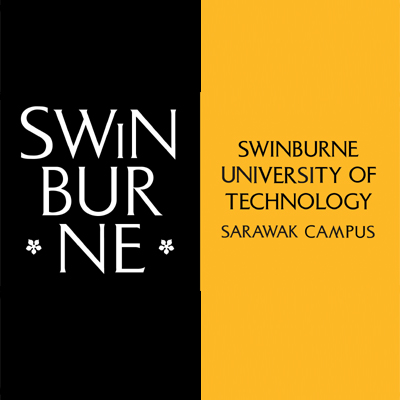
The Bachelor of Engineering in Telecommunication and Network Engineering is a broad-based course. It develops in students a mastery of the basic engineering principles underlying electronic and telecommunications engineering. This course emphasises an in-depth understanding of the technology of the internet and the international telecommunications industry. It covers the internet, local and global digital networking, and mobile communication systems for tomorrow’s broadband-interactive information highways. The course also offers electives that prepare the student to obtain both Cisco Systems and Microsoft Industry certifications.
The degree provides graduates with skills in RF telecommunications, with specialisation in wireless secure communications; advanced level networking, with a strong emphasis in security; digital and analogue electronics; software programming; and mathematics. Detailed theoretical learning is coupled with extensive practical experience in various aspects of networking and signal analysis used in the telecommunications/networking field. A large range of electives is also available to suit individual interests.
Students study at the Sarawak campus in the first and second year of study. They then complete their third and fourth year at the Hawthorn campus.
The following six objectives are the typical skills and abilities that Swinburne graduates will have a few years after graduation as they develop their professional engineer careers.
At the completion of the Bachelor of Engineering (Telecommunications and Network Engineering) course, graduates will be able to demonstrate the attainment of the following Swinburne Engineering Competencies, required for external professional recognition:
Core studies
Software Engineering studies
Internetworking studies#
Management and Business studies
Electives studiesH
Specialist Study Elective (Select 4 units) or Minor Streams with package of 4 units.
In addition to the above units the successful completion of HED400 Professional Experience in EngineeringH (12 weeks of approved relevant industrial practical experience) before the last semester of study is required for the award of the above degree. Students have the option to undertake Industry-Based Learning (IBL)H which is full-time paid placement in industry for 6 (HEW050) or 12 months (HEW050 and HEW055) in an area relevant to engineering studies after Semester 5 or Semester 6. An administrative fee may apply for this option. The successful completion of IBL can be used to fulfil the requirements of HED400 Professional Experience in EngineeringH.
Students must also complete HIT0004 Careers in the Curriculum, an innovative unit designed to assist Swinburne students to enhance their employability and career prospects, before commencing HED400 or IBL.
HUnits taken at Hawthorn Campus.
# Students who have not completed an approved Cisco Networking Academy Program (CNAP) must do HET104 and HET424.
Swinburne offers International Exchange Programs as well as other Education Abroad Programs to help internationalise your degree. International Exchange is an academic program allowing you to study at a Swinburne Partner Institution for one or two semesters during your degree. Swinburne’s Partner Institutions offer many relevant subjects as well as a secure base to explore a different culture. Your studies whilst on exchange can be credited towards your Swinburne degree, provided they are relevant and approved by Swinburne. For further information visit the Swinburne Abroad website
Graduates will find rewarding high-tech careers in the converging telecommunications, multimedia, computing, and internet ‘information technology’ industries. They may become an internet applications engineer, a telecommunications link designer, an embedded computing systems designer, an embedded software systems designer, a network switching and protocol designer, an analyst/designer/manager of internal corporate multimedia networks, or a network administrator/webmaster.
| Level of study | Foundation and Diploma | Undergraduate | Postgraduate |
|---|---|---|---|
| IELTS | 5.5 (no individual band below 5.0) | 6.0 (no individual band below 6.0) | 6.5 (no individual band below 6.0) # 7.0 (no individual band below 6.5) |
| TOEFL (Paper based) a (Internet based)b |
527 |
550 |
575 |
| SPM * | B | – | – |
| UEC ** | A2 | A2 | – |
| MUET *** | 4 | 4 | – |
| GCE ‘O’ and ‘A’ Level | Score of ‘C’ or better for ‘O’ level English**** | Score of ‘C’ or better for ‘A’ level English | – |
| International Baccalaureate | Minimum of 4 in English A1 or A2 (Higher and Standard Levels) or Minimum of 5 in English B (Higher Level) | – | |
| * | Students with a C+ or C English grade are required to enter the Intensive English program at UIIE; students with a D or E English grade are required to sit the Swinburne Sarawak English Placement Test to determine the level of Intensive English program they must enter |
| ** | Students with B3 to B6 English grades are required to sit the Swinburne Sarawak English Placement Test to determine whether they require additional English classes |
| *** | Students who obtain band 1 to 3 in MUET are required to sit the Swinburne Sarawak English Placement Test to determine whether they require additional English classes |
| **** | Not applicable for “English as Second Language” |
| a | Foundation and diploma programs – minimum Test of Written English [TWE] score of 4.5 Undergraduate programs – minimum Test of Written English [TWE] score of 5.0 Postgraduate programs – minimum Test of Written English (TWE) score of 5.0 |
| b | Foundation and diploma programs – with no band less than 18 Undergraduate programs – with no band less than 20 Postgraduate programs – with no band less than 20 |
| # | Entry requirement for Master of Arts (TESOL) |
Source : SwinBurne University Of Technology